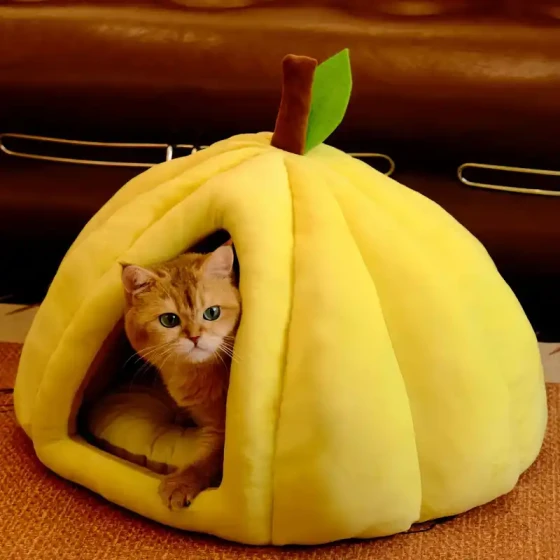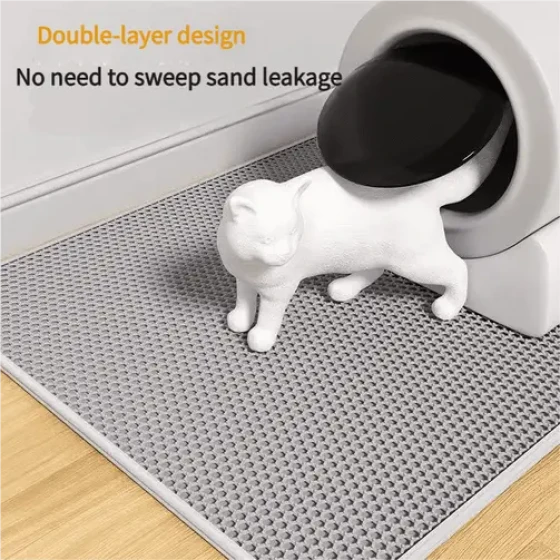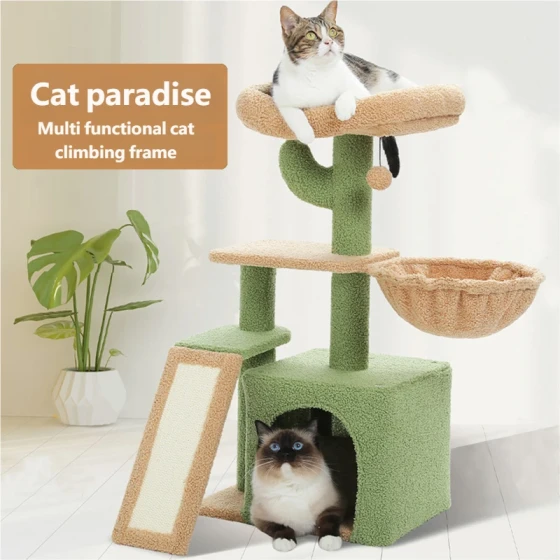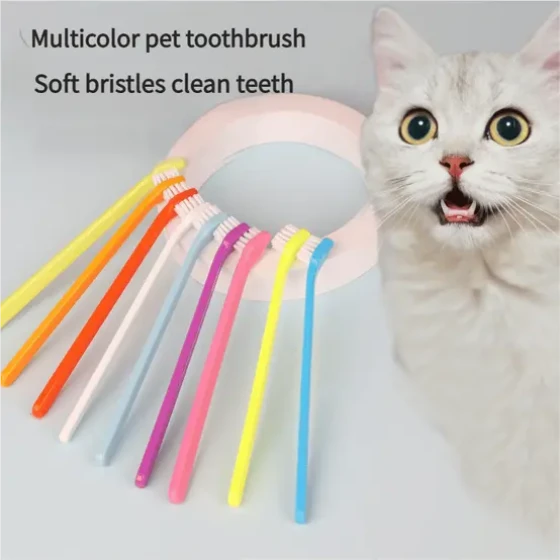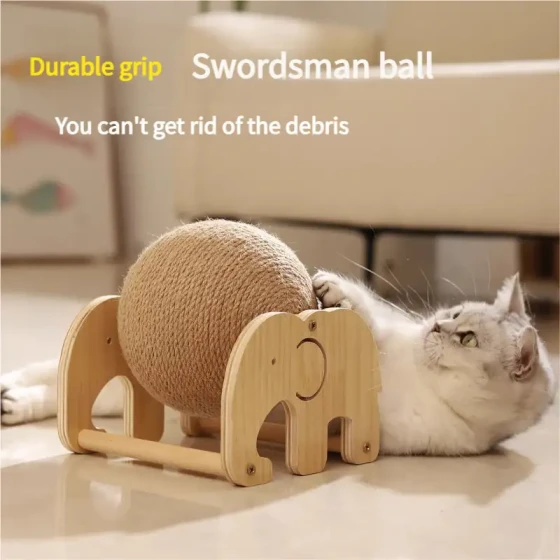Two Cats Keep Meowing So Miserably_Reasons and Solutions for Cats Crying Nonstop
Cats crying nonstop, does it sound so miserable? Don’t worry, it might be that they are trying to convey important information to you! Understanding the reasons for cat crying and addressing them properly can help your furry friend regain happiness.
Cats use various sounds to express their needs and emotions, such as “meow,” “purr,” “hiss,” etc. If your cat suddenly meows nonstop and the sound seems very miserable, it may indicate some underlying problems, possibly physical discomfort, emotional changes, or environmental factors. As a pet owner, it’s crucial to timely understand these causes and take action.
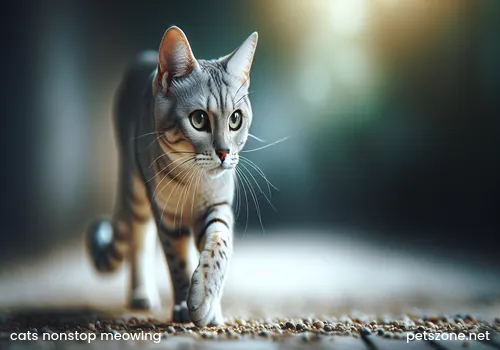
Common Reasons Cats Cry Nonstop
There are many reasons for cats crying, ranging from simple physiological needs to complex health problems that can cause this behavior.
1. Seeking attention and expressing needs
Often, cats meow just to get your attention. They might be hungry, thirsty, or want you to play with them or groom them. For example, when you are preparing to eat, they may meow to remind you that their food bowl is empty. Some cats are naturally more "talkative" and like to communicate with their owners through meowing.
2. Physical discomfort or pain
If a cat suddenly starts meowing nonstop, especially if the sound seems miserable or painful, it’s likely there is a physical problem. Cats are very good at hiding pain, a trait inherited from their ancestors to avoid being noticed by predators. Therefore, when you hear a painful cry, the condition might already be serious.
- Pain: Arthritis (common in elderly cats), dental problems, urinary tract infections, etc., may cause pain leading to crying. Sometimes, cats cry when being held due to pain.
- Diseases: Hyperthyroidism (common in older cats), hypertension, kidney disease, and others can make cats more restless, increasing vocalization.
- Cognitive dysfunction (senile dementia): Older cats may exhibit symptoms similar to human dementia, such as disorientation, nighttime restlessness, and increased vocalization.
- Sensory decline: Decreased vision or hearing in older cats can cause confusion and anxiety, leading them to call out for help.
3. Stress and anxiety
Environmental changes, altered routines, new family members (including new pets), can all stress cats and increase their vocalization. Some cats may also urinate inappropriately, hide, or lose appetite as a result.
- Separation anxiety: Especially in indoor cats very attached to their owners, long periods alone may cause separation anxiety, shown by excessive meowing, urinating outside the litter box, and destructive behavior.
4. Heat cycle
Unspayed female cats in heat will emit continuous, loud meows (commonly called "calling for heat") to attract males. Accompanying behaviors may include restlessness, rolling on the floor, arching the back, and licking the genital area. Male cats may also meow and try to go outside if they smell a female in heat.
5. Kitten's needs
Newborn kittens cry in their first few weeks to express hunger and need for warmth. If a kitten cries continuously, it might be looking for its mother or siblings, especially just after being adopted.
How to Tell If a Cat Is in Pain?
Cats have a high pain tolerance, so careful observation is needed. Besides crying, painful cats may show the following signs:
- Behavior changes: Usually lively cats suddenly become lethargic, avoid movement, hide, lose interest in playing and interacting. Their personality may change, becoming irritable or more aggressive.
- Abnormal posture and gait: Arched back, curling up, limping, unwillingness to jump or climb. Some cats change position frequently, unable to find a comfortable spot.
- Grooming habit changes: Painful cats may stop or reduce self-grooming, resulting in messy fur. They might also excessively lick painful areas.
- Appetite changes: Decreased appetite or refusal to eat or drink.
- Changes in elimination habits: Urinating outside the litter box or vocalizing while eliminating.
There is a tool called the "Cat Facial Expression Scale" that assesses pain by observing eyes, mouth tension, ear position, whisker changes, and head position. If the score exceeds a certain value, it may indicate the cat is in pain.
How to Help a Cat That Cries Nonstop?
Different causes require corresponding measures to effectively solve the cat's crying problem.
1. Meet basic needs
First, check if the cat’s food and water bowls are adequately filled and if the litter box is clean. Ensure the cat has a comfortable and warm resting place.
2. Rule out health problems
If crying suddenly increases, especially in older cats or accompanied by other abnormal symptoms (such as loss of appetite, lethargy, abnormal walking), be sure to take the cat to see a vet promptly. The vet will examine and rule out potential diseases or pain. Never give cats human painkillers on your own, as this may harm them.
3. Address stress and anxiety
- Create a sense of security: Provide hiding places for the cat, such as boxes or cat beds. Maintain a stable routine and minimize environmental changes.
- Increase interaction and play: Spend time daily to play with your cat to expend their energy and reduce boredom and loneliness. Use teaser toys, laser pointers, and other interactive toys.
- Enrich the environment: Prepare cat trees, viewing platforms (so cats can see outside), and various toys, such as puzzle feeders, allowing cats to "hunt" their food for fun and challenge.
- Play background music or sounds: When you are not home, play soft music, radio, or "cat-specific" videos to make the home sound less empty.
- Use pheromone products: Cat pheromone products (like Feliway) can help cats relax and reduce anxiety.
- Gradually adapt to being alone: For cats with separation anxiety, try behavioral training, such as starting with short trips away and gradually extending alone time. When leaving or coming home, avoid excessive enthusiasm to handle the process quietly.
4. Address heat cycle issues
If your cat is unspayed and in heat, crying is normal. The most effective solution is to take them for spaying surgery at a veterinary clinic. Spaying not only solves heat-related meowing but also prevents some reproductive diseases.
5. Meet special needs of senior cats
Senior cats may need more patience and care due to declining physical and cognitive functions.
- Regular check-ups: Ensure timely detection and treatment of senior diseases.
- Adjust living environment: Place food, water, and litter box where they can easily reach them. Choose low, open litter boxes for easy access.
- Nighttime crying: Senior cats may cry at night due to cognitive dysfunction, pain, or lack of security. Try feeding before bedtime or provide night lights to increase stability.
6. How to respond to attention-seeking meows
For meows purely seeking attention, try ignoring until the cat quiets down before responding. This avoids reinforcing attention-getting through meowing. But be sure to distinguish between mere wanting affection and genuine needs.
Frequently Asked Questions
Q: My cat's crying sounds like crying, is it sick?
A: Miserable or painful cries may indicate illness or pain in cats, especially if accompanied by other abnormal symptoms. It’s best to take the cat to the vet for checkup promptly.
Q: My cat meows nonstop at night, what should I do?
A: Nighttime crying is common in elderly or cats in heat. Senior cats may have cognitive issues or physical discomfort; females in heat cry to attract males. After ruling out medical reasons, try playing and feeding before sleep. Spaying is an effective way to solve heat-cycle meowing.
Q: Is the cat meowing deliberately disruptive?
A: Cats meow to communicate needs; they are not intentionally noisy. Understanding their reasons helps better meet their needs.
Q: How to tell if a cat is in pain?
A: Observe behavior, posture, appetite, grooming habits. A painful cat may hide, arch its back, lose appetite, stop grooming, or lick painful areas excessively.
Summary
Cats crying nonstop can have many causes, from simple physiological needs to complex health issues. Responsible pet owners need to observe cat behavior carefully, understand what their meows mean, promptly rule out illness, and provide appropriate care and environment management. If the cause is unclear or symptoms persist or worsen, seek professional veterinary help to ensure your furry friend’s health and happiness.
References:
- Star of Texas Veterinary Hospital - Why Is My Cat Meowing So Much? Understanding Feline Vocalization and What It Means
- PetMD - Why Is My Cat Meowing So Much?
- Lakeland Animal Clinic - 6 Reasons Your Cat is Meowing Excessively
- Petplan - Why is my elderly cat yowling?
- VCA Animal Hospitals - How Do I Know if My Cat is in Pain?
- QQ.com - How to tell if a cat is in pain? Signs of cat pain
- Purina Institute - Tips to soothe cats and dogs with separation anxiety
- Hill's Pet Nutrition - Why Is My Kitten Crying? (and How to Help Them Stop)
- NetEase - Do you understand the meaning of six common cat vocalizations?
- PetMD - How to Tell if a Cat Is in Pain
- Animal Trust - A Guide to What to Do When Your Cat Is in Heat
- NetEase - Handling cat separation anxiety
- The Ohio State University - Separation Anxiety
- Tencent News - Going out for National Day? Beware of cat separation anxiety, 8 ways to relieve anxiety
- Cornell University College of Veterinary Medicine - The Special Needs of the Senior Cat
- Vets4Pets - Your Cat's First Season
- Mengzhusheng - 10 main sounds made by cats
- Sina - Do you know the meaning of these 10 types of cat meows?
- PetMD - The Cat's Meow! Caterwauling in Cats
- PetMD - 6 Reasons Your Kitten Is Crying
- PetMD - Cats in Heat: How Long It Lasts and What To Do
- Douban - 18 signs of cat pain
- Hill's Pet Nutrition - Identifying signs and symptoms of cat pain
- NetEase - Meow behavior | Separation anxiety | Bird
- PetMD - Fading Kitten Syndrome
- MYAO Cat Behavior Manual - Separation Anxiety 178
- VCA Animal Hospitals - Estrous Cycles in Cats
- Petco - Separation Anxiety in Cats
- Rover.com - Cat Separation Anxiety: Symptoms, Causes, and How To Help
- Reveal Pet Food - The signs your cat has separation anxiety (and what to do about it)
- 8 Signs of Separation Anxiety in Cats And What to Do About Them
- Pawlicy Advisor - Why Your Cat Is Meowing So Much & What You Can Do About It
- Reddit - Kitten constantly crying/meowing, plz HELP
